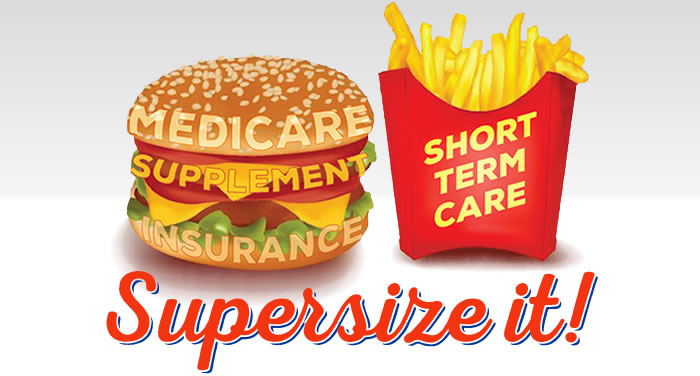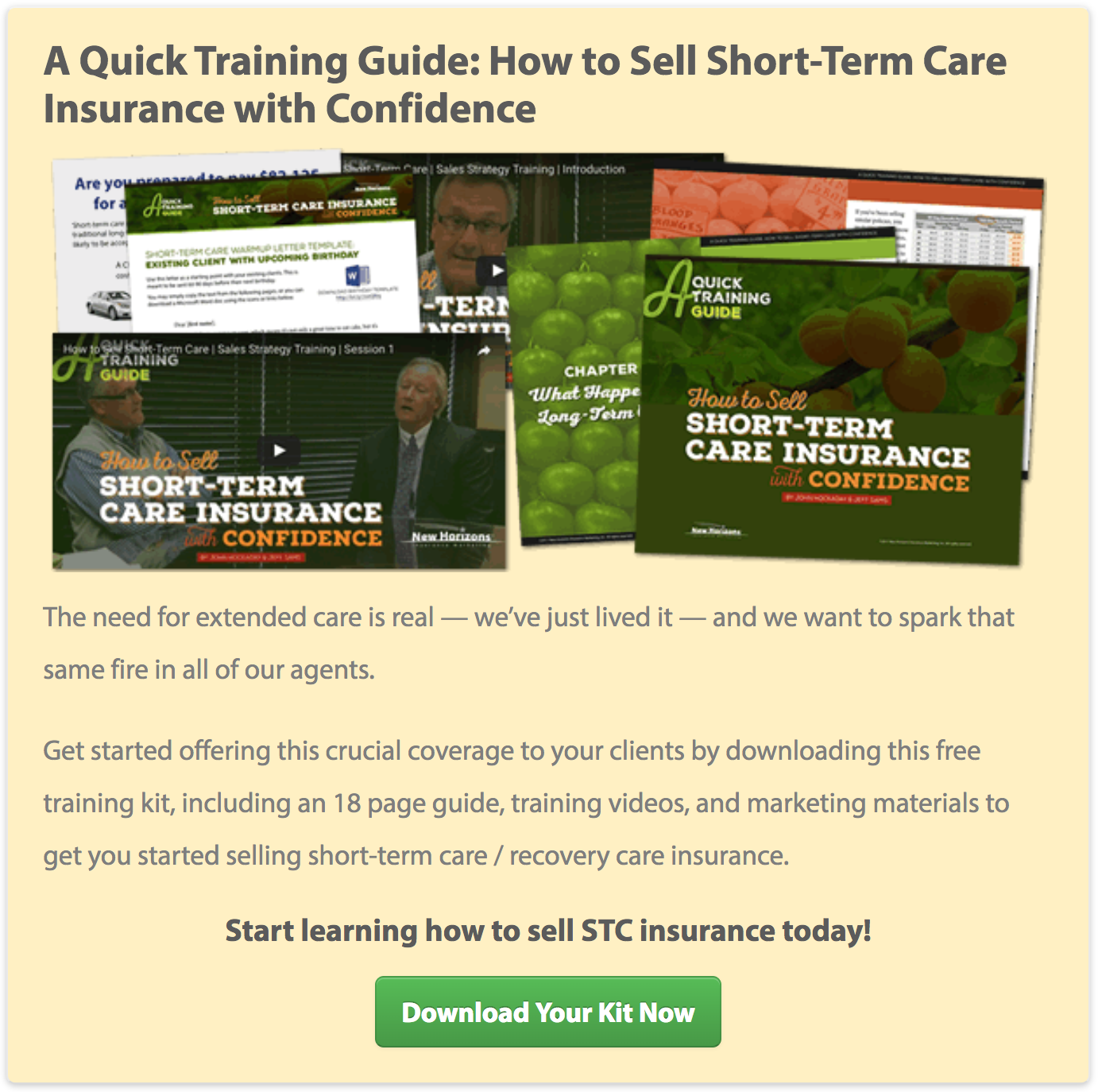By John Hockaday and Jeff Sams
Back in the day, selling insurance wasn’t all about product knowledge and comfort level.
In fact, when John and I were presented with a new product to sell, we just swung from the hip.
Sure, you get more confident when that product knowledge and training kicks in, but at the root of every successful sale is a mix of sales techniques that actually work.
You probably noticed that we’re hot on short-term care right now, and for good reason. Long-term care is becoming a thing of the past for our senior market, and short-term care is an alternative that makes perfect sense.
The rest of the industry is following suit as well — the first national short-term care summit just happened, and Aetna just revamped their recovery care product. And it’s taking off, too.
We recently spoke with George Pelekanos, Regional Vice President of Sales with Aetna, and he confirmed that their sales are skyrocketing with a 328% run rate. He explains:
“It has been a really hot product on the market. Agents are a creature of habit, but recovery care is like Pringles — once you pop, you just can’t stop. Once agents try it and see how easy it is and how well-received it is by the client, they take off on it.”
So, with all of this in mind, we’d like to give you 4 sales techniques that are foundational for your insurance business.
All of these techniques will be your bread-and-butter for closing those add-on products that can
- boost your revenue stream and
- financially stabilize and protect your clients.
#4 Supersize It
We all know the McDonald's trick — sell the hamburger at a low profit margin in the hopes that the customer will add on some fries and a drink and maybe even supersize their meal.
The same strategy goes for selling insurance.
For example, “Do you want fries with that?” → “Do you want the short-term care coverage with that?”
When you present short-term care as an add-on, it appears that that’s exactly what most consumers do. There’s this underlying assumption that it’s so common that you just ask as a courtesy.
So, the next time you sell a Med Supp, try supersizing it with an add-on product. Many agents already do this with cancer plans and final expense insurance. While short-term care is slightly more expensive, it’s still a great product to tag on to your original sale.
#3 Need, Like, Afford
There’s three reasons why you buy anything: you need it, you like it, and you can afford it.
We used to write that down — need, like, afford — and then we’d break it down with our clients.
For example, “Mrs. Jones, if you went into a nursing home, would you need $8,000 per month?”
Then you can check that off.
Then, “Do you like this carrier, etc.?”
Then you check that off, and all that’s left is affordability.
And that’s when you show them how to afford it. You might even package it with an annuity, because you have to find the income to pay for it.
It’s really a process, but when you’re making the sale, make sure you’re crossing off these three important points.
When it comes down to it, recovery care is a sale.
You have to build the need and help them along.
Once you do that, you’ve made the sale.
#2 Sell to Existing Customers
The easiest way to make any insurance sale is off an existing customer. You get the ball rolling with the Med Supp, because almost everybody is going to buy one.
Then, you say something like this:
“If you have assets to protect, this is something I just have to show you. Medicare and Med Supps don’t pay for assisted living or home-care, and they’re limited in what they pay for a skilled facility.
Here, I can give you extra help by adding this policy to your Med Supp for not a whole lot more money.”
If you’ve built trust and have an ongoing relationship with your existing customers, they’ll be ready to listen to you if you have a suggestion.
Go back to your existing customers with this needed recovery care product that you’re excited about.
Mr. Pelekanos with Aetna explains:
“Just work your book of business. Go back to your clients and see them. Identify insurable risk, offer a viable solution, make extra money, and take care of your client. It’s low lying fruit.”
We know of an agent who has sold 12 short-term care policies in the past 2 weeks. All he’s doing is going back on his existing customers and picking up the sales. He’s focused in on it now. He told us he even sold one to an 87-year-old lady.
You can do this, too. You’ve done the legwork of getting the customer… why not start cross-selling to solidify that relationship even more?
#1 Don’t Take No for an Answer
Back in the day, if we had customers who had assets to protect, we eventually got that long-term care in there if they could qualify. It might take us years (and sometimes it did), but every time we saw a client, we brought the subject up.
It wasn’t like “they told me ‘no’ today, so six months from now they’ll tell me no again.” That’s not the case at all.
If you’re asking the same thing over and over again, it’s because you believe your customers need it.
Maybe something has changed. Maybe one of their buddies just went through the need for recovery care. Maybe they have $103,000 in their checking account, they just wrote a check for their real estate taxes, and their account dipped below $100,000. They may decide to not write a check until it bounces back up.
You never know.
The redundancy of being repetitive and seeing your customers regularly is so important.
No doesn’t mean forever at all.
Don’t stop asking.
If you just started offering this to your existing Med Supp customers on a regular basis, it’d be amazing how much of it you’d write.
These 4 sales techniques are going to get you much closer to the sale. The good news is that we have 6 more.
In our STCi sales training kit, we give you access to the following:
- A Quick Training E-Guide
- Customizable Mailpieces
- A Point-of-Sale Flyer
- A Drug List Reference
- 15 Training and Roleplay Videos From the Owners of New Horizons (that’s us!)
It’s a no-brainer. Why?
- It’s free,
- you get our 10 proven sales techniques,
- there’s easy pros and cons charts you can reference to understand the benefits of STC in about 30 seconds, and
- we’ve taken 78+ pages of brochures and product information and have condensed it into a few simple charts.
We’ll be coming out soon with product specific video tutorials to make sure you’re confident in rate calculations as well as the application process.
But before you go, can you let us know if there are any other recovery care materials you’d like us to create for you? After all, we do all of this for you!
Don’t forget to grab your free kit here →






